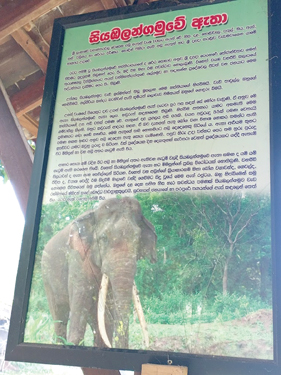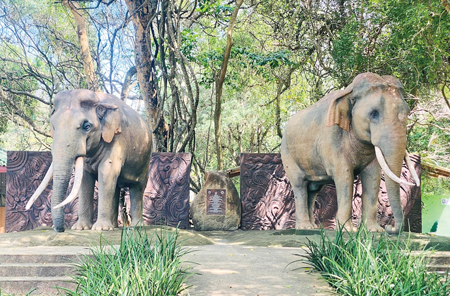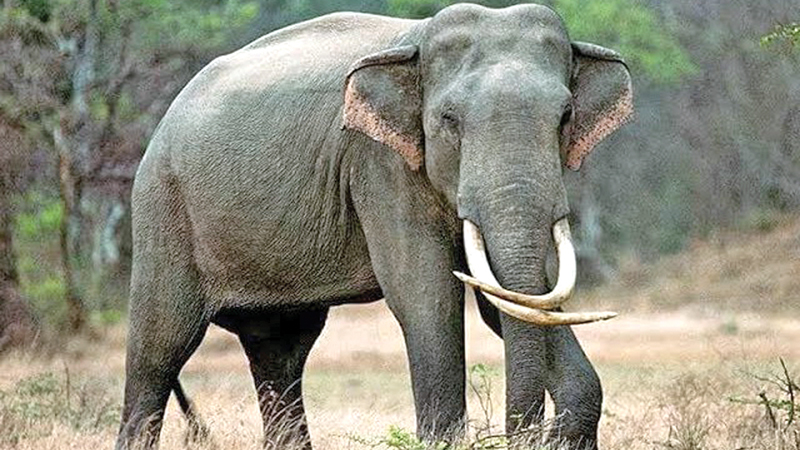The sky, the earth, and the natural resources we often take for granted are not the inheritance of humans alone. For centuries, humans have forgotten that the cool air, fresh wind, warm sunlight, and serene moonlight belong to all living beings. Through deforestation, pollution, and unchecked expansion, humanity has stripped the planet of its natural treasures, leading to the loss of crucial resources such as clean water, fresh air, and rich biodiversity. Tragically, this destruction has also claimed countless animal lives, leaving behind a legacy of suffering and loss.
Despite the ancient teachings of Buddhism, Hinduism, and Jainism emphasizing nonviolence towards all living beings, the reality in Sri Lanka paints a starkly different picture. In a country where Buddhism is widely practised, cases of animal cruelty, illegal poaching, and abuse continue to rise. Heart-wrenching reports emerge daily, exposing the suffering inflicted on animals, both wild and domestic. These incidents challenge the moral and ethical values Sri Lanka has long claimed to uphold.
 Against this backdrop, the first and only Animal Nonviolence Monument in Sri Lanka stands as a beacon of hope and a reminder of our responsibility towards the natural world. Located in the Gimanhala Ecological Park near the Pulanchiya Lake Senarathgama, Galgamuwa, along the Padeniya-Anuradhapura road, this monument pays tribute to Sri Lanka’s rich wildlife and calls for greater compassion towards animals.
Against this backdrop, the first and only Animal Nonviolence Monument in Sri Lanka stands as a beacon of hope and a reminder of our responsibility towards the natural world. Located in the Gimanhala Ecological Park near the Pulanchiya Lake Senarathgama, Galgamuwa, along the Padeniya-Anuradhapura road, this monument pays tribute to Sri Lanka’s rich wildlife and calls for greater compassion towards animals.
A tribute to majestic wildlife
The monument was constructed by the Ahimsa Sri Lanka Animal Rights and Welfare Organisation and later handed over to the Galgamuwa Pradeshiya Sabha for maintenance. Over the years, it has become a significant attraction for both local and foreign tourists, as well as pilgrims travelling on the Padeniya-Anuradhapura route. Surrounded by the tranquil beauty of the Gimanhala Ecological Park, it offers visitors a space to reflect on humanity’s relationship with nature.
At the heart of this monument are two statues honouring the legendary elephant kings of Galgamuwa—the Siyambalangamuwa Elephant and the Dala Poottuwa. Designed by artist and instructor J. Ratnayake Shureen, the statues were crafted using advanced computer software to achieve lifelike proportions. Officially initiated in February 2019, the monument has since become a symbol of animal rights and conservation.
The Siyambalangamuwa Elephant was a revered giant, known to roam the landscapes of Galgamuwa, Siyambalangamuwa, Konwewa, and Maha Galgamuwa. Standing between eight to 12 feet tall, with five-foot-long tusks, he was beloved by locals, but suffered at the hands of those who failed to respect his presence. Tragically, while being transported to the Udawalawe National Park by the Department of Wildlife Conservation, he met his untimely demise when the floor of the transport vehicle collapsed. His death, which caused public outrage, led the grieving community to bury him with full religious honours.
Similarly, the Dala Poottuwa, another beloved tusker, was the victim of ruthless poaching. On November 29, 2017, his lifeless body was discovered at Thibbotuwawa near the Pallekele Sanctuary in Kahalla. Following an autopsy, it was confirmed that he had been killed by ivory traffickers. The community, mourning his loss, gave him a ceremonial burial, and the perpetrators were eventually brought to justice.
A call for compassion
 This monument was not built merely to commemorate these fallen giants, but also to serve as a reminder of the shared inheritance of all living beings. The principle of natural justice dictates that the earth belongs equally to animals and humans alike. Therefore, the Animal Nonviolence Monument should be embraced as a national treasure, transcending religious and cultural boundaries to foster a deeper sense of respect for wildlife.
This monument was not built merely to commemorate these fallen giants, but also to serve as a reminder of the shared inheritance of all living beings. The principle of natural justice dictates that the earth belongs equally to animals and humans alike. Therefore, the Animal Nonviolence Monument should be embraced as a national treasure, transcending religious and cultural boundaries to foster a deeper sense of respect for wildlife.
Sadly, despite the teachings of the Buddha, many in Sri Lanka remain unaware that October 4 is recognised globally as World Animal Day. Instead of upholding the values of kindness and nonviolence, animal cruelty has become an unchecked reality. It is a sobering thought that Sri Lanka’s long tradition of animal compassion, dating back to the arrival of the Arahat Mahinda Thera, when a deer was spared his life, has been overshadowed by modern neglect.
For those travelling along the Padeniya-Anuradhapura road, taking a moment to visit this monument can serve as a powerful reminder of our duty to protect and respect all forms of life. The serene surroundings of the Gimanhala Ecological Park provide the perfect setting to reflect on our responsibilities towards nature.
As Mahatma Gandhi once said, “The greatness of a nation and its moral progress can be judged by the way its animals are treated.” Likewise, the ancient Sri Lankan concept of Dasa Raja Dharma (Ten Royal Virtues) emphasizes the importance of providing shelter and security to animals. In light of these ideals, we must ask ourselves: Are we truly living up to the values we claim to uphold?
The Animal Nonviolence Monument is more than a tribute to fallen tuskers; it is a call to action. It urges Sri Lankans and the world to recognise that kindness to animals is not just an ethical duty but a reflection of our collective humanity.




